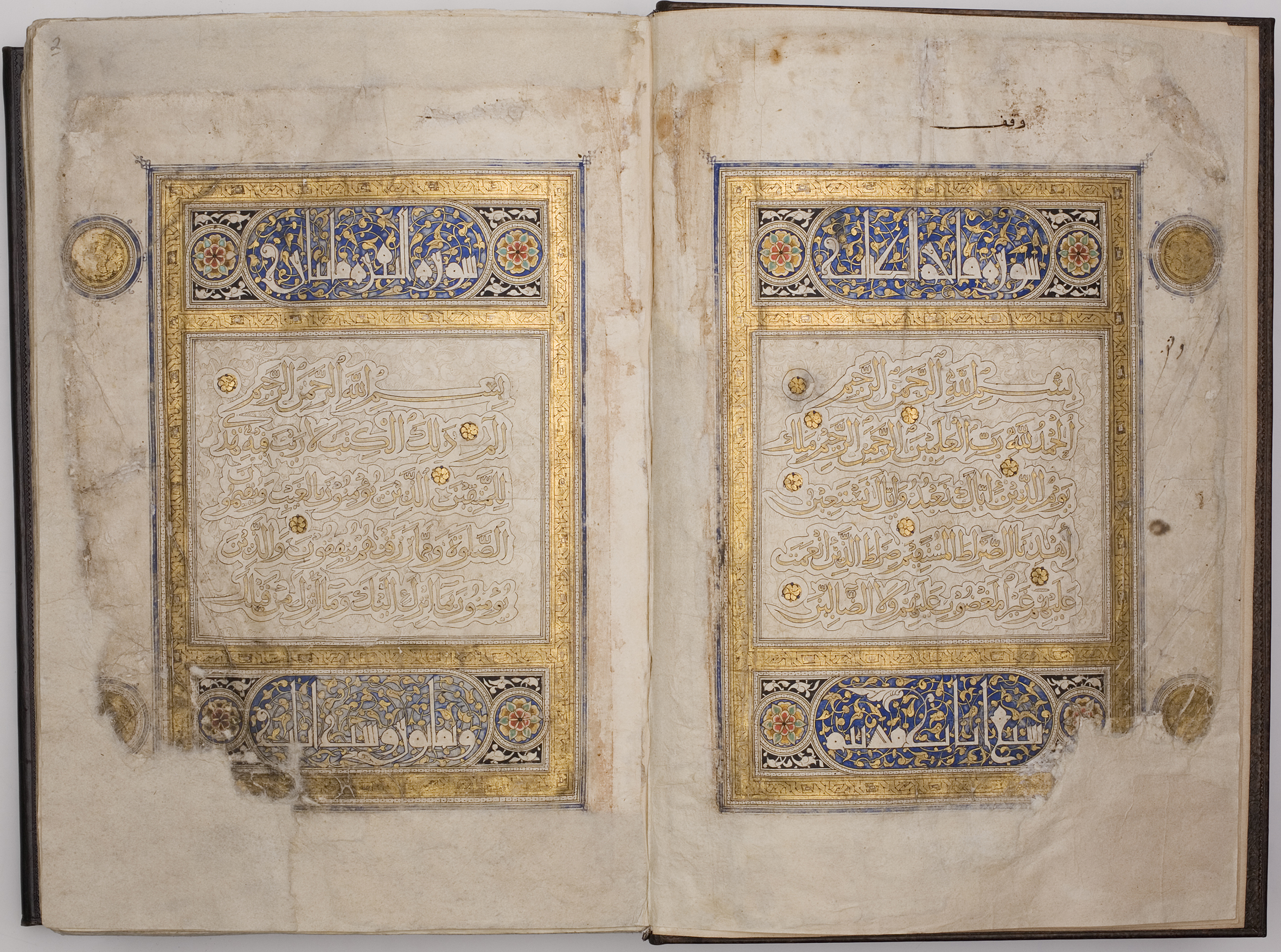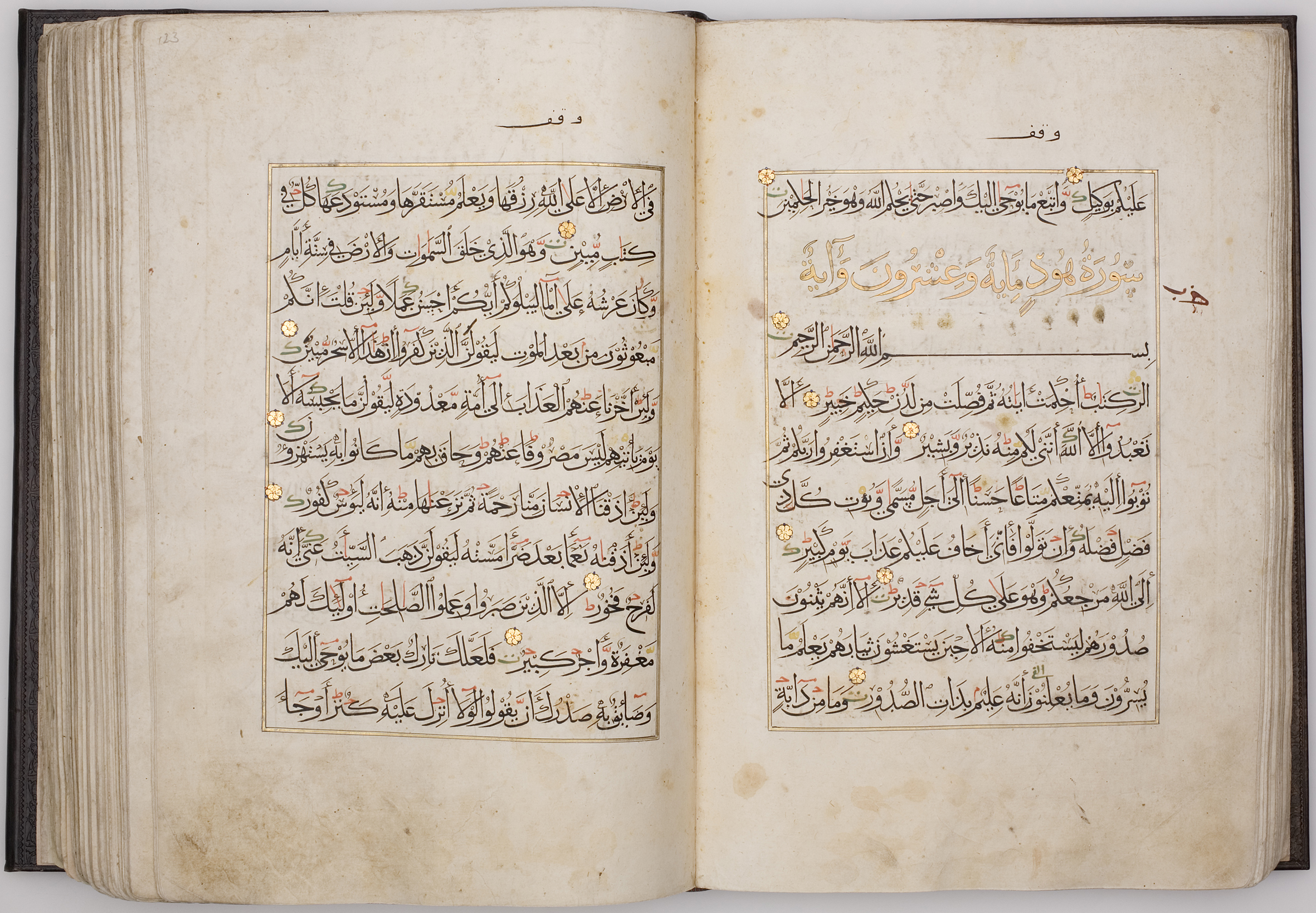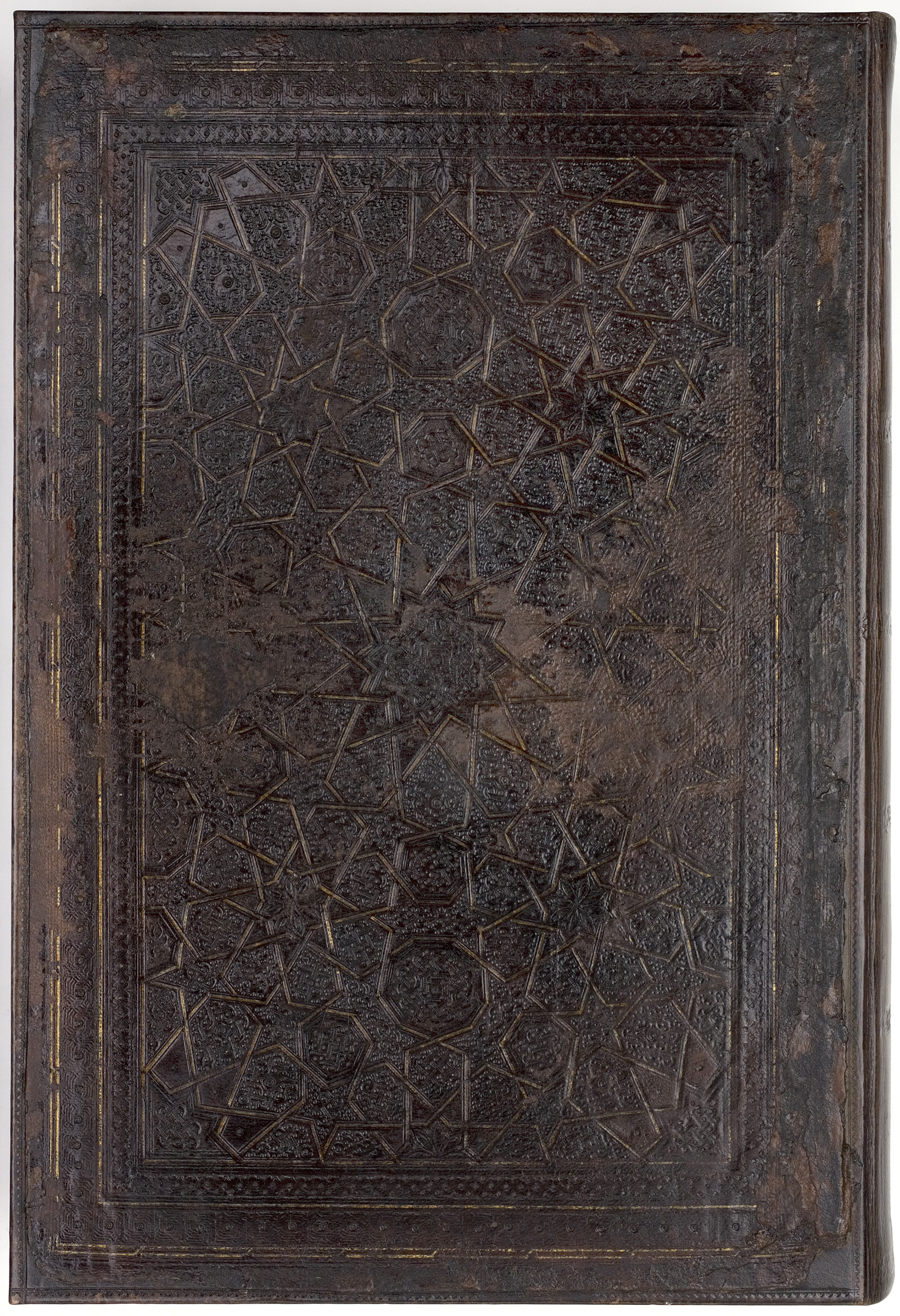 Print Page
Print Page
 Print Page
Print Page
Location: Egypt or Syria
Materials: ink, gold and opaque watercolour on paper; contemporary binding of gold- and blind-tooled brown morocco leather
Dimensions: 356 folios; 38.4 x 25.7cm
Accession Number: QUR 187
Other Notes:
The opening text pages, the Fatihah and the beginning of surah al-Baqarah, are written in ‘clouds’ in gold outlined in black, on a ground of rich, but rather faint, foliate scrolls. Above and below are the surah headings and verse counts in elongated oval panels, with circular handles or ansae filled with a many-petalled rosette. Both the rosettes and the mannered Kufic of the panels have features in common with Qur’ans ordered in the 1360s by the Mamluk sultan, al-Malik al-Ashraf Sha‘ban II, for his own funerary foundation or that of his mother, Khawand Barakah, in Cairo, or indeed with the stucco inscription in the main iwan of the mosque of Sultan Hasan, which was still unfinished at his death in 1362.
Script:
main text copied in muhaqqaq scrip, incidentals in muhaqqaq and Kufic; 11 lines to the page
Bibliography:
D. James, The Master Scribes. Qur’ans of the 10th to 14th Centuries AD, The Nasser D. Khalili Collection of Islamic Art, volume II, London 1992, cat.44, pp.180–83.
J.M. Rogers, The Arts of Islam. Masterpieces from the Khalili Collection, London 2010, cat.166, p.144.


